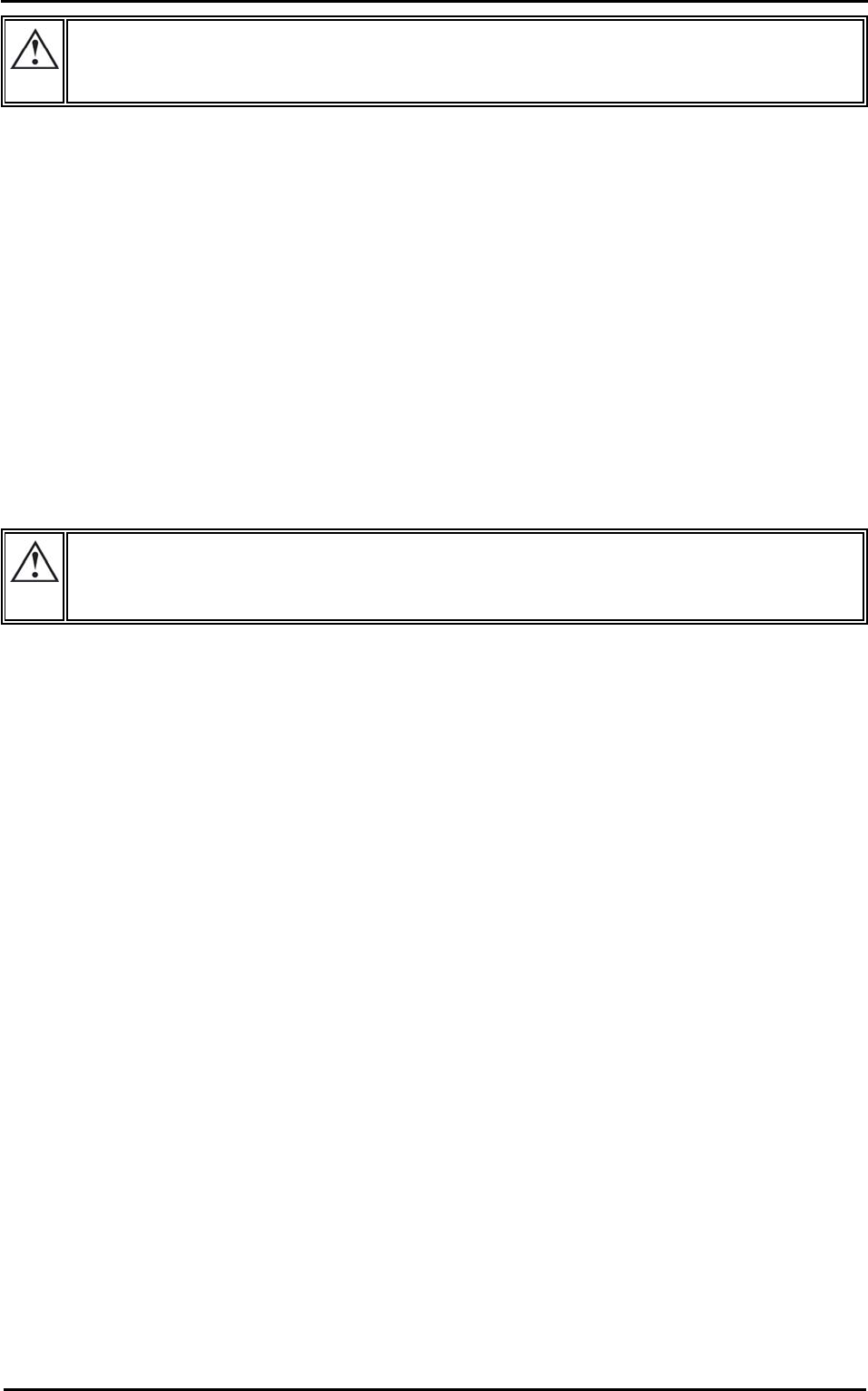
STUDER Innotec Xtender
Installation and operating Instructions Xtender V1.3 Page 21
A battery voltage greater than 1.66 x the nominal voltage may lead to significant damage or
destroy the device.
Overheating of the Xtender, Insufficient ventilation, increased ambient temperature or obstructed
ventilation may lead to overheating of certain internal components of the unit. In this case, the device
will automatically limit its power output as long as this abnormal situation persists.
The Xtender is protected from reverse polarity by means of an external fuse installed on the battery.
6.2.10
A
UXILIARY CONTACTS
The Xtender has two dry reversing contacts that are potential-free. The status of the contacts in idle
mode (deactivated) is indicated by the annotations, N.C. = normally closed and N.O. = normally
open.
Maximum contact loads: 230 Vac / 24 Vdc: 16 A or: max. 50Vdc/ 3A
These dry contacts are programmed by default for the following functions:
Contact no. 1 (AUX 1): The contact has a function of automatic star of generator (two wire). Contact
will be activated when the battery voltage is, during a given time {1247/48}/{1250/51}/{1253/54},
less than the value given by parameter {1246/49/52}. The contact will be deactivated or when the
charge cycle as reached absobtion, or when the "Aux. 1 deactivation voltage" {1255} is reached
during a pre-determinated time {1256}
The voltage of the battery is automatically compensated according to the instantaneous
battery current the same way as it is done for compensation of LVD (see chapter 6.2.8 –
p.20) if parameter {1191} is activated
Contact no. 2 (AUX2) : alarm contact by default. It is deactivated when the inverter is out of service
or is working at reduced performance, either because of manual control or if there is an operational
fault such as overload, undervoltage of the battery, overtemperature, etc.
The functions of the two auxiliary contracts can be modified and programmed variously with the help
of the RCC-02/03 control.
If the operator or installer requires different behaviour for the auxiliary contacts, they are both freely
and individually programmable depending on the battery voltage and the inverter status and the
internal clock.
The intelligent programming of the auxiliary contacts allows many applications to be considered
such as:
Automatic startup of the generator (two or three wires)
Automatic load shedding of the inverter (2 sequences)
Global or individual alarm
Automatic disconnection (load shedding) of the source
6.2.11
T
HE REAL TIME CLOCK
The Xtender has a real time clock that allows the functioning of the auxiliary contacts to be managed,
in particular. This clock must be adjusted via the use of the RCC-02/03 remote control.
6.2.12
R
EMOTE CONTROL ON
/
OFF
The functioning of the Xtender may be interrupted by opening the connection, normally between the
two terminal points “REMOTE ON/OFF”, fig. 8a-(7). Operation will recommence when this
connection is re-established. The device is delivered with a bridge between the 2 points of this
terminal.
It is also possible to control this function according to the different variants indicated in fig. 8b. If a
variant is used, the jumpers (6) must be positioned at 1 a-b and 2 a-b.
Operating voltage: Max. 60 V eff. (I max. 30 mA)
In multi-unit configurations (see below) the interruption of operation of just one of the system’s units
by the cabled control (7) involves the immediate interruption of operation of the other units of the
system. This input can be used, for example, as an emergency stop.


















